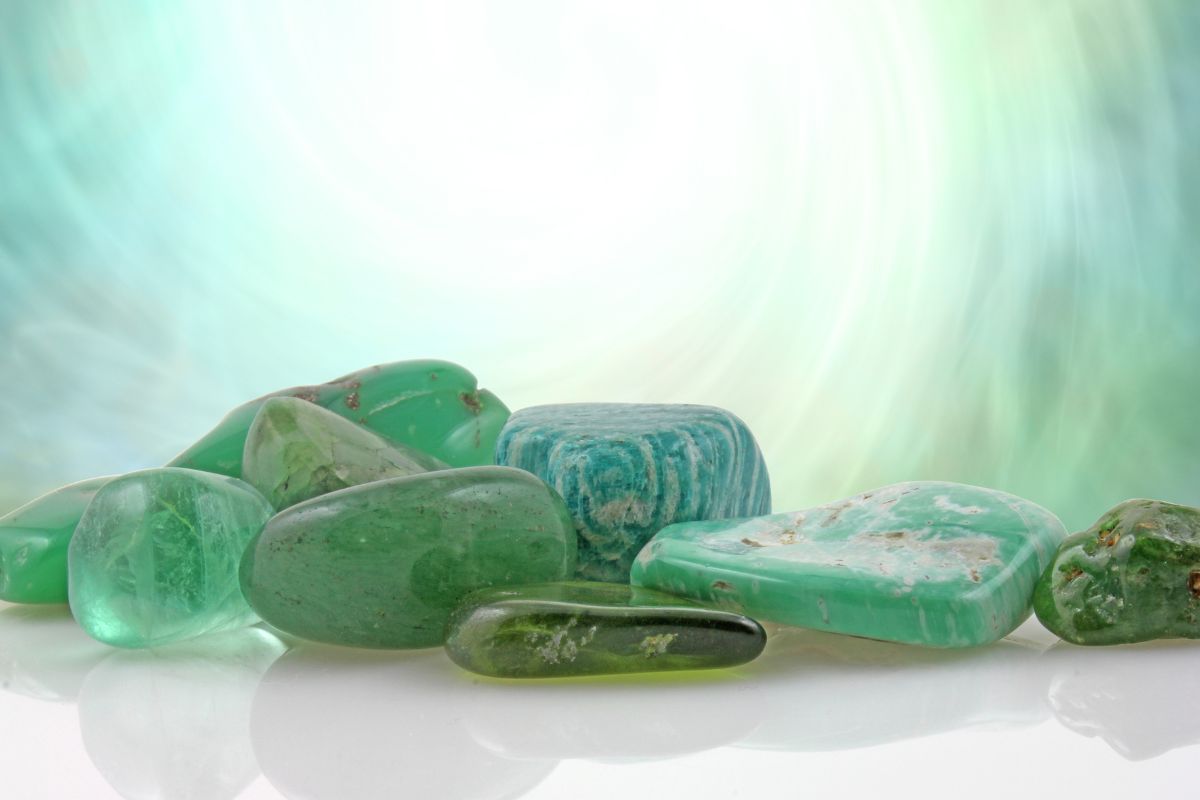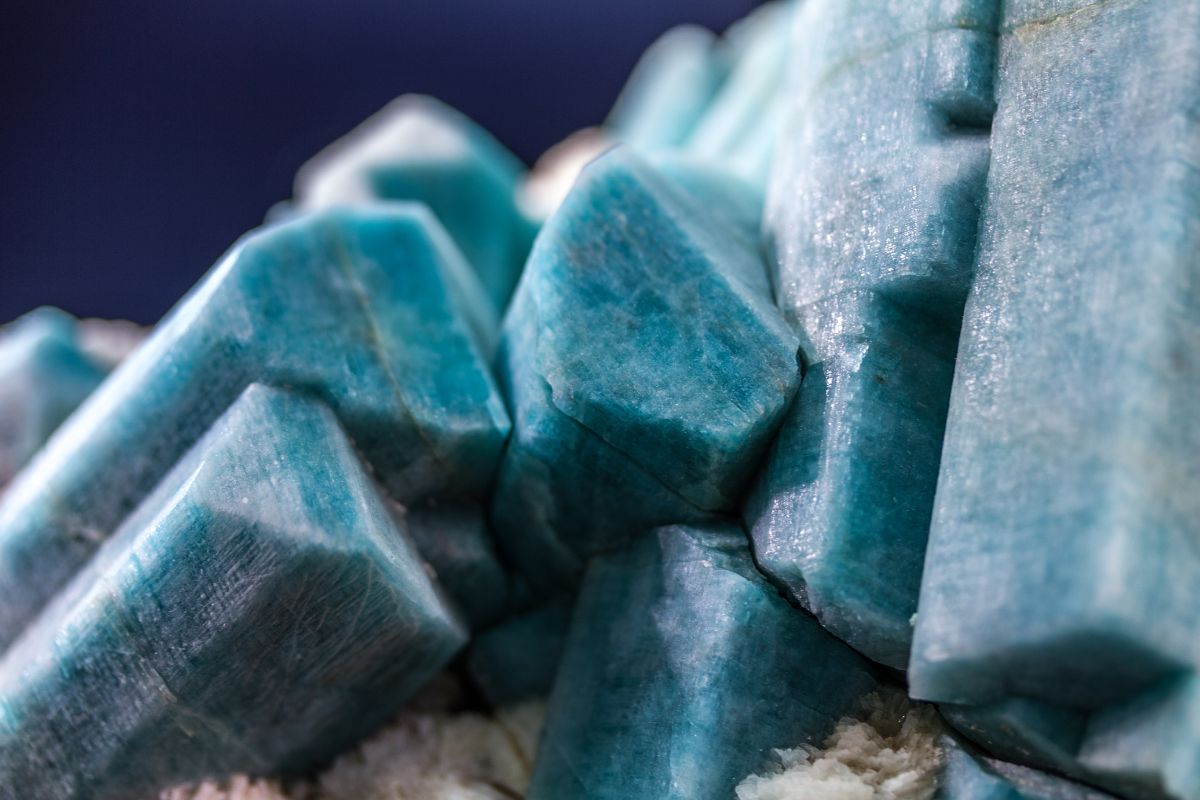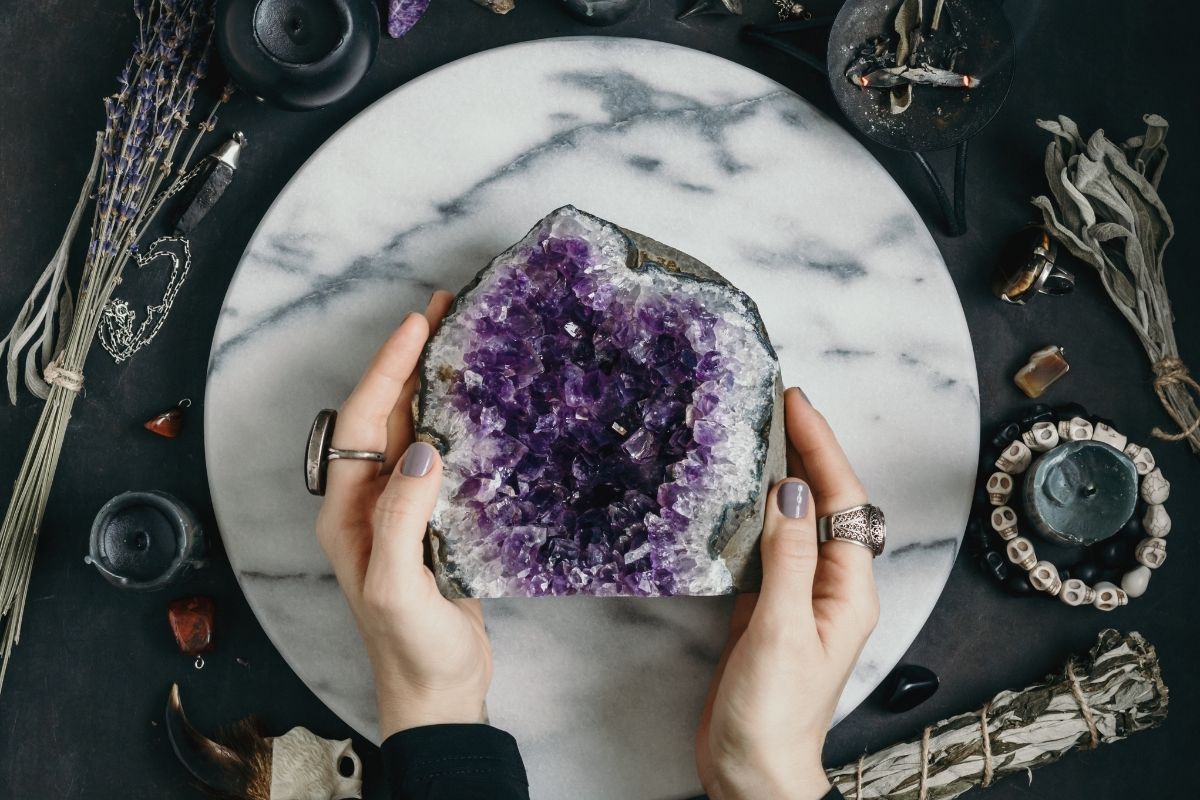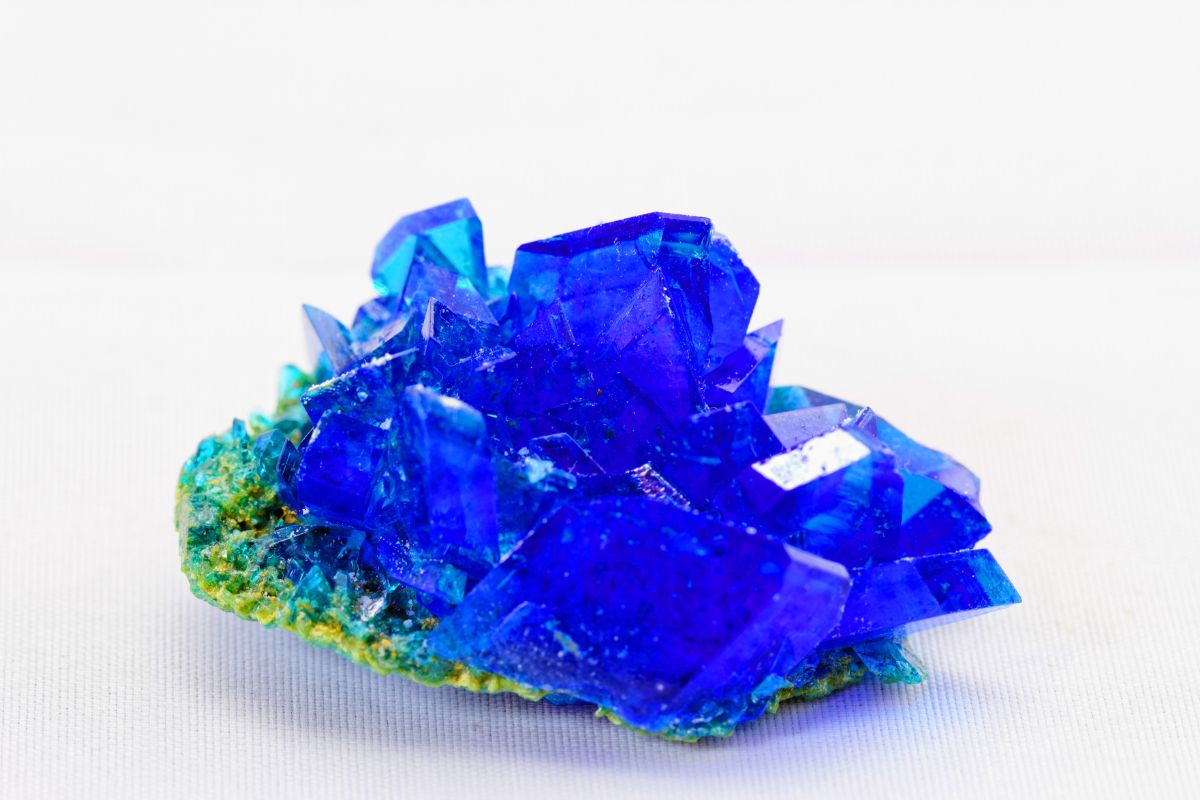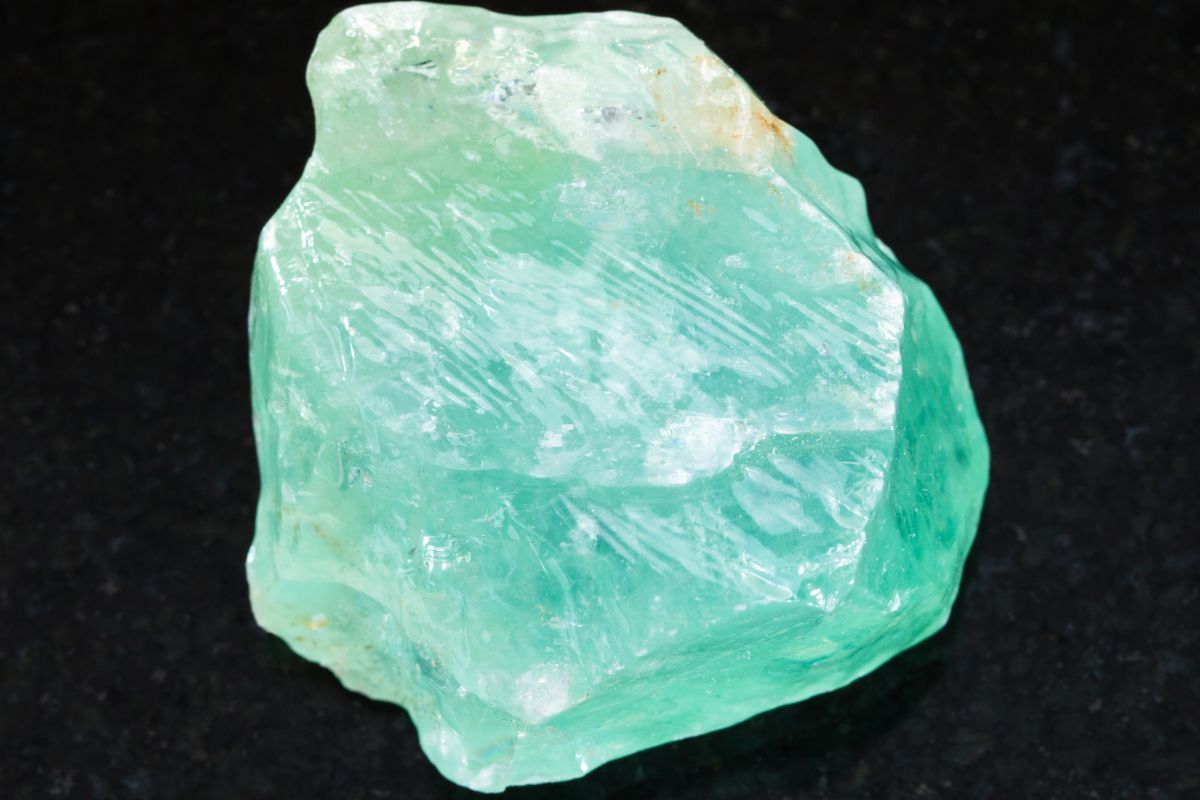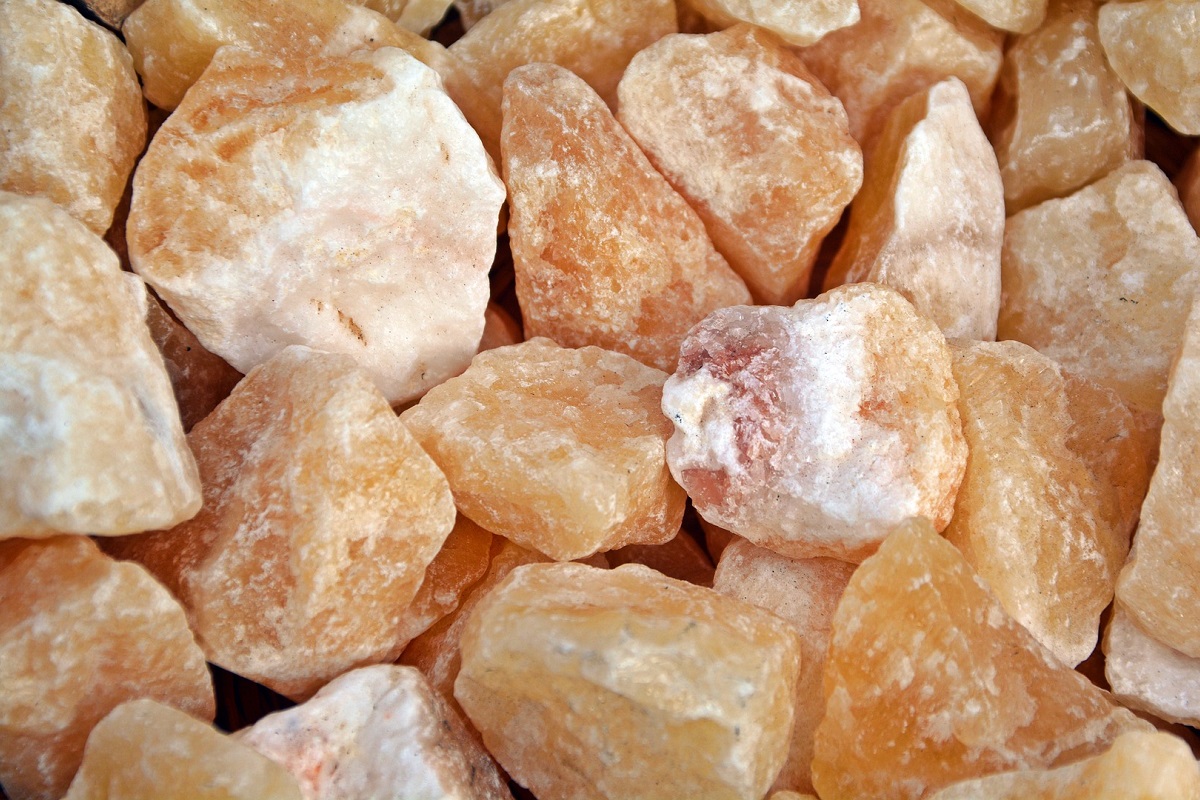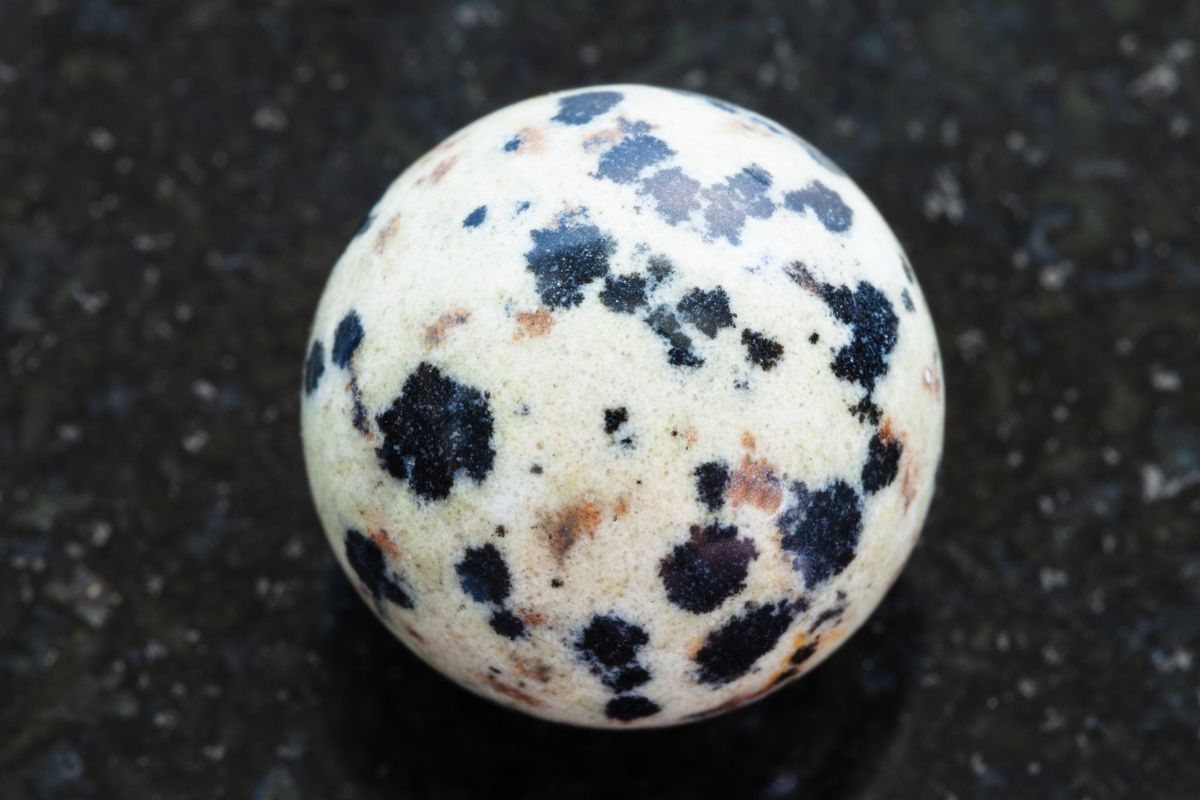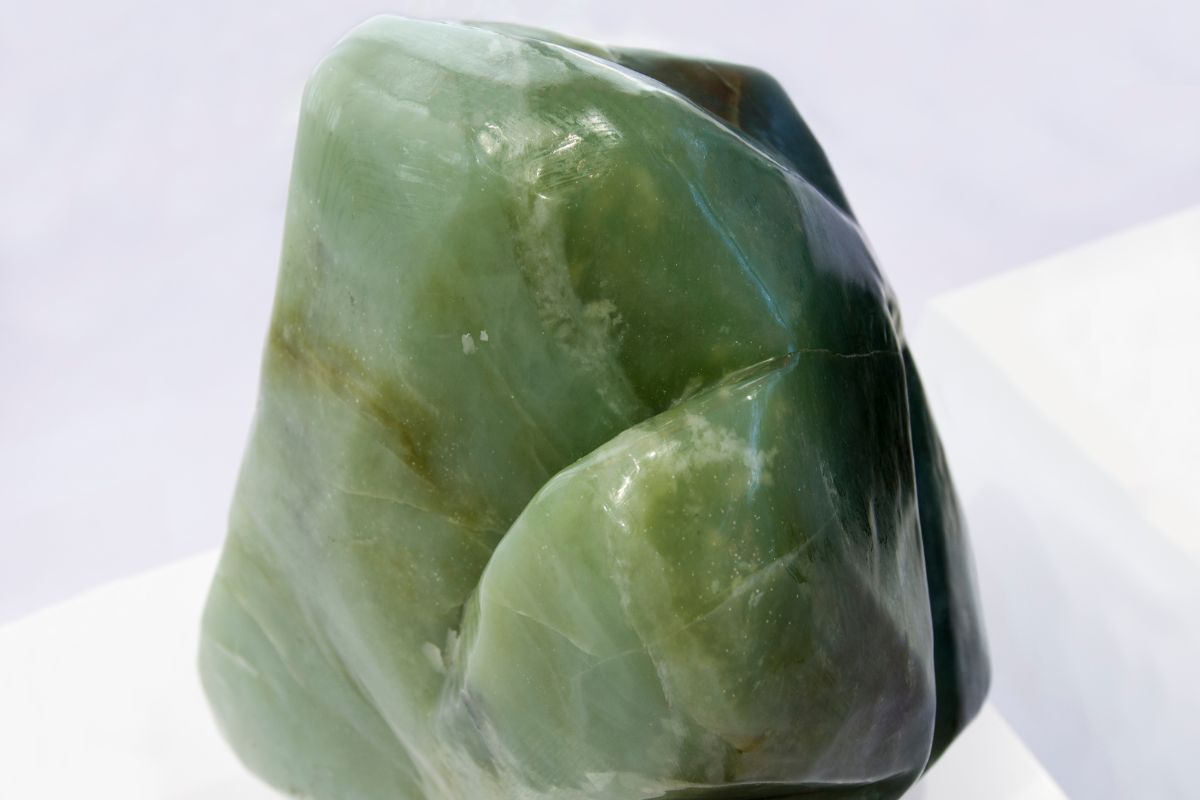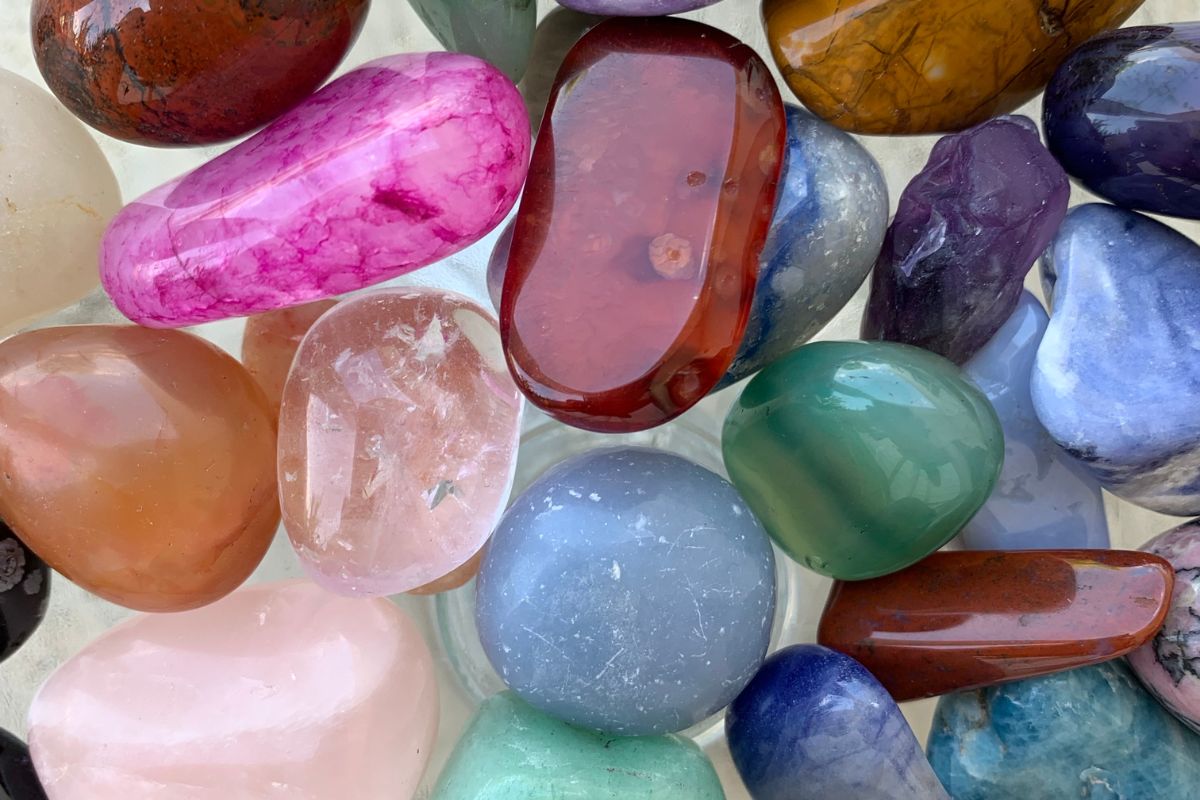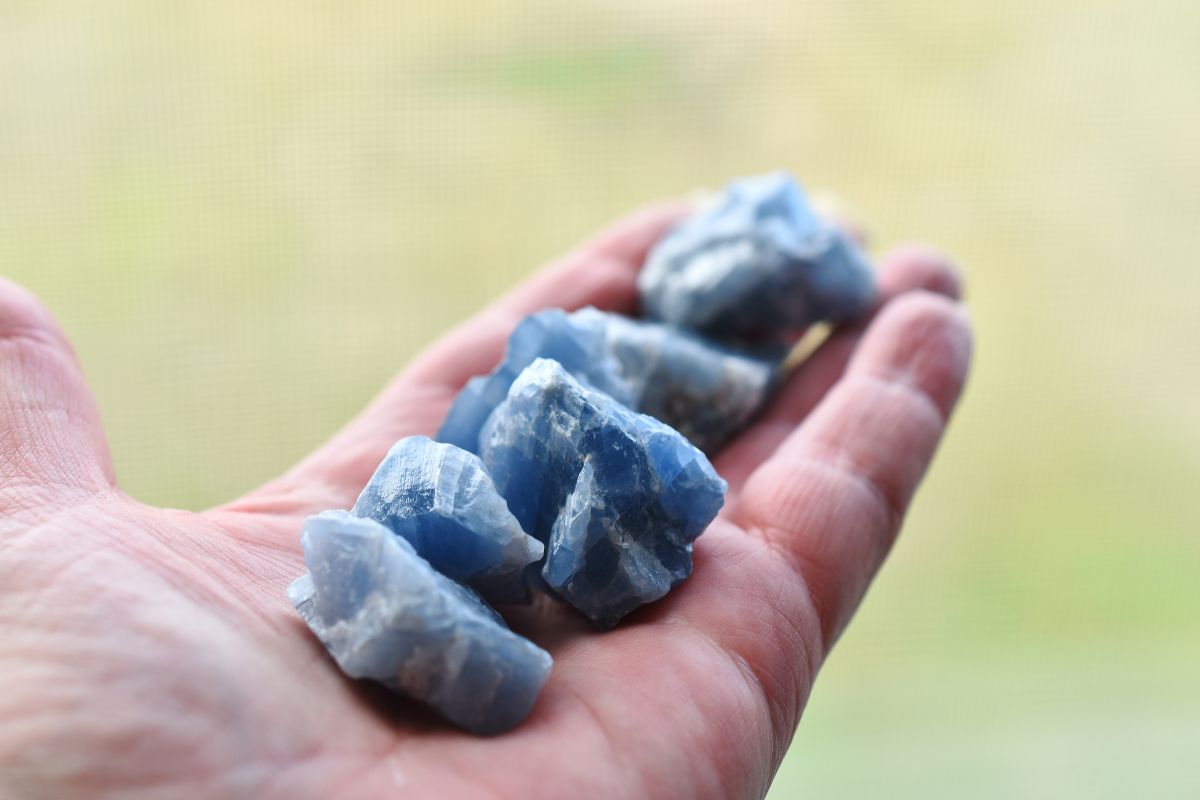Being that different crystals can have starkly different effects, it’s essential that you’re able to tell them apart when you have two or more that look similar, such as orange calcite and citrine.
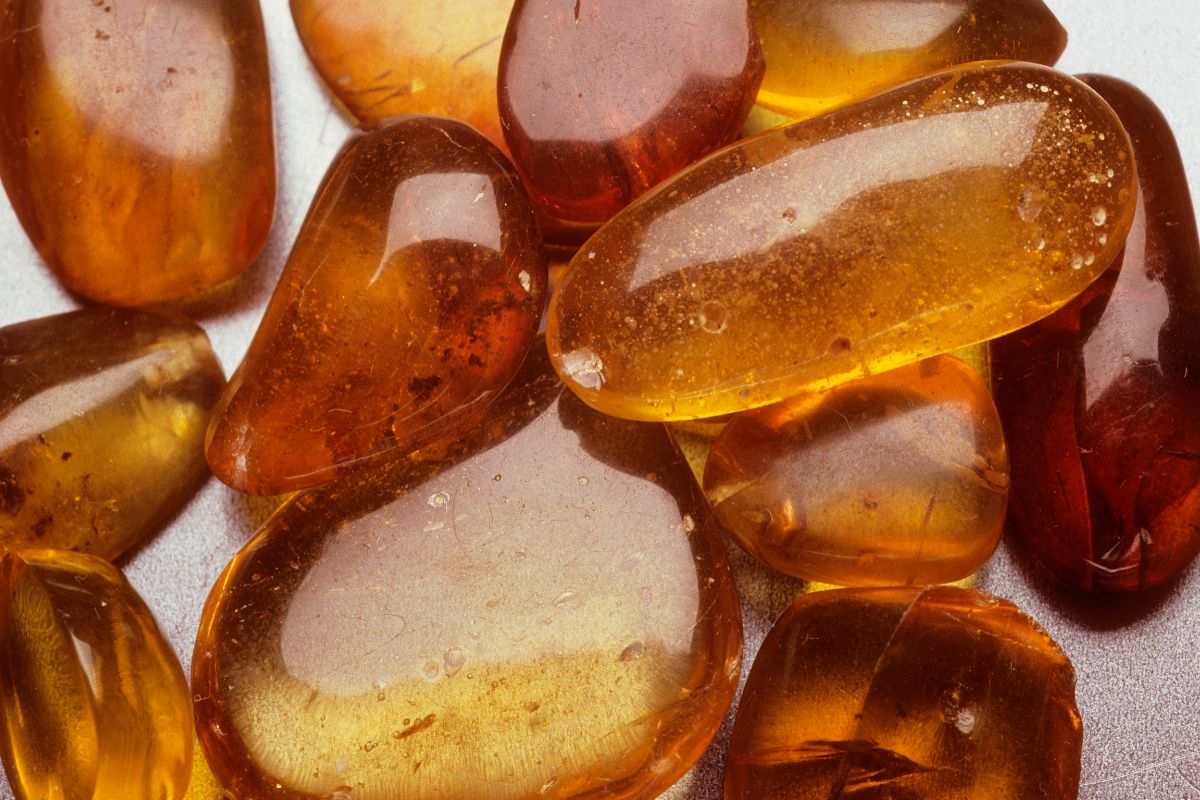
Both orangey-yellow in color, these minerals have been causing confusion and chaos amongst crystal enthusiasts for centuries, but despite their similar appearance, these tangerine twinsies are uniquely their own.
How so, I hear you ask? Well, that’s exactly what we’re going to be exploring in today’s post. Stick with me and you’ll know how orange calcite and citrine differ in no time!
Quick Comparisons
No time to check out my full orange calcite vs. citrine showdown? No worries! Dip into this comparison list for a swift checkout.
Here, you’ll learn about the major distinguishing factors of these crystals, factors I’ll elaborate on after the fact for those who have the time to learn a bit more.
Color
- Orange Calcite — Orange/yellow
- Citrine — Orange/yellow
Location
- Orange Calcite — USA, Canada, & Mexico
- Citrine — Madagascar & Russia
Rarity
- Orange Calcite — Very common
- Citrine — Rare
Mineral Type
- Orange Calcite — Carbonate
- Citrine — Silicate
Hardness
- Orange Calcite — 3 on the MOHs hardness scale
- Citrine — 7 on the MOHs hardness scale
Crystallization
- Orange Calcite — Trigonal
- Citrine — Hexagonal
Chemical Formula
- Orange Calcite — CaCO₃
- Citrine — SiO₂
Luster
- Orange Calcite — Vitreous
- Citrine — Vitreous
Specific Gravity
- Orange Calcite — 2.7
- Citrine — 2.65
Physical Impact
- Orange Calcite — Associated with reproductive health
- Citrine — Associated with digestive health
Emotional Impact
- Orange Calcite — Associated with joy
- Citrine — Associated with optimism
Metaphysical Impact
- Orange Calcite — Associated with heightened creativity
- Citrine — Associated with abundance and wealth
Zodiacal Relationship
- Orange Calcite — Cancer
- Citrine — Libra, Leo, & Gemini
Birthstone Month
- Orange Calcite — N/A
- Citrine — November
Associated Chakras
- Orange Calcite — Solar Plexus & Sacral
- Citrine — Solar Plexus & Sacral
Cosmic Links
- Orange Calcite — The Sun
- Citrine — Jupiter
Elementary Connections
- Orange Calcite — Fire
- Citrine — Air
Numerology
- Orange Calcite — 5
- Citrine — 6
Orange Calcite: The Nitty Gritty
Primarily composed of calcium carbonate, orange calcite is an incredibly soft mineral, so its practical applications are limited.
For instance, it’s not such a great choice for jewelry, as both impacts and exposure to water will fast-track the deterioration process.
To put orange calcite’s MOHs score of 3 into context, human fingernails score roughly 2.5, so yeah… this is one fragile mineral and it should never be submerged in water.
It’s also the most abundant mineral on the planet after quartz and is a constituent element in marble, limestone, and chalk.
The color of calcite is determined by the nature of its impurities.
As is the case with most crystals with a yellow-ish hue, the honeyed variant is the product of light colliding with numerous microscopic iron oxide particles trapped with its crystalline structure, but it can also be pink, white, black, or blue.
The shade of calcite determines its corresponding chakras — The orange variant forms a powerful connection to the Sacral and Solar Plexus chakras.
While orange calcite is incredibly common and can be found all over the world in all three rock types (chiefly in the USA, Canada, & Mexico), it’s also quite breathtaking in both its polished and rough-and-ready forms.
What Are The Healing Qualities Of Orange Calcite?
Viewed by many as petrified sunlight, keeping orange calcite nearby can have a hugely positive impact on your mood and world outlook.
By extension, they’re great confidence-building crystals that can help you go from a passive observer in life to an active player willing to create opportunities for yourself.
It promotes joy by balancing your emotions and helping you attain a sense of psychic calm, so if your feelings have been rather turbulent as of late, i.e. insecurities are getting you down or fear is getting the better of you, orange calcite is great to have around.
As it can ease spiritual and emotional blockages standing in the way of your evolution as an individual, orange calcite is also a fantastic motivator that can help you stay focused and make your dreams a reality, especially if your goals surround creativity.
This crystal is believed to expand your imagination, inspiring new channels of thinking, so it can be considered a problem-solving aid as well.
With orange calcite in close proximity, spiritualists believe that liver, kidney, and spleen functionality is enhanced, which is why many like to keep it around the house where they spend most of their time, but you’re much more likely to see some in the bedroom than any other room…
Tied closely to reproductive health and libido, it can help you find your groove between the sheets, and focus the mind on the ultimate creative process… procreation.
Ultimately, all the benefits of orange calcite are secondary to its primary purpose, which is to establish emotional, physical, and mental equilibrium.
Citrine: The Nitty Gritty
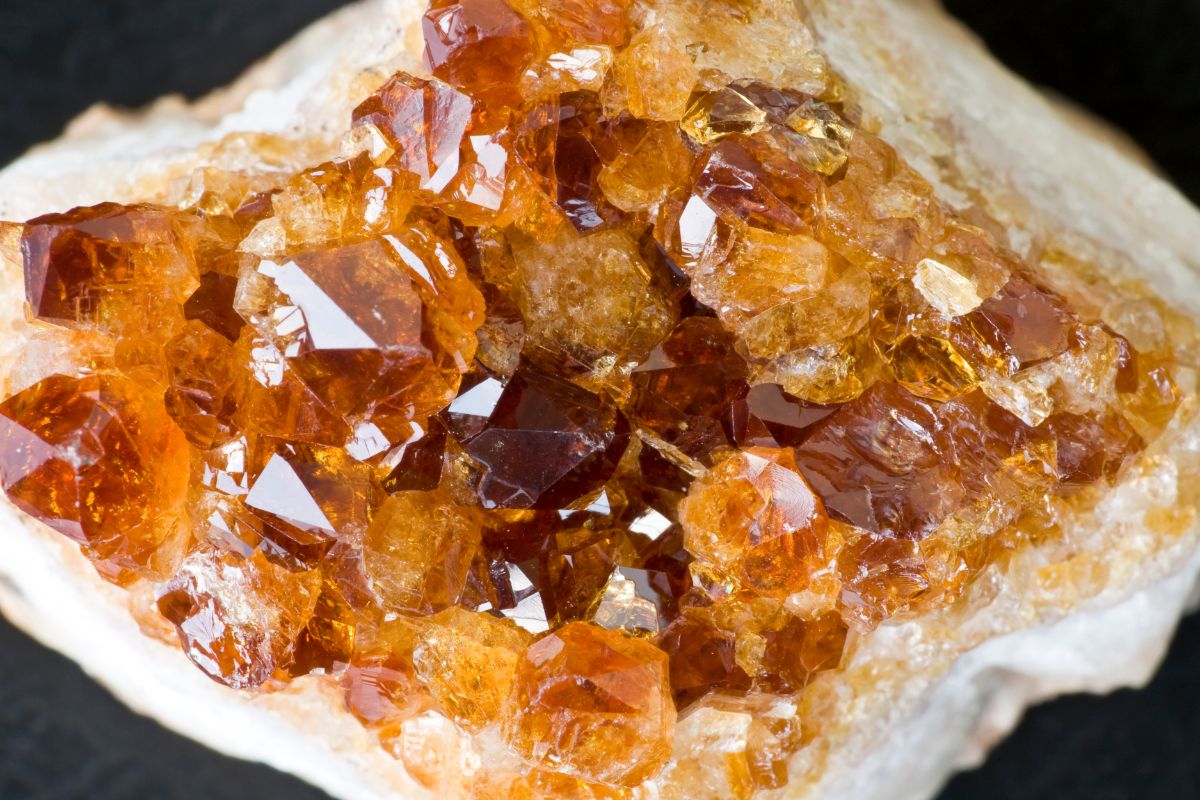
Citrine belongs to the silicate family of minerals and is one of the most sought after quartz variants on the planet.
With a score of 7 on the MOHs hardness scale (which only goes to 10) it’s a very resilient crystal indeed, perfect for jewelry making, meaning you can tap into its amazing properties wherever you go!
As you might have guessed, its name comes from the French word citron, literally translated as “lemon”, which is a nod to its yellow hue, although those with higher levels of iron impurities can sometimes be so dark as to look golden brown.
Yet, despite its rugged form, excessive exposure to light on a regular basis can cause fading.
It’s mostly found in the Ural Mountains of western Russia and across Madagascar.
But it’s a relatively rare mineral, which is why you should be suspicious of specimens available on the internet with price tags that seem too good to be true.
In all likelihood, these crystals will actually be thermally-altered amethyst.
What Are The Healing Properties Of Citrine?
Rather ironically, the golden hue of this rare gemstone has been linked to abundance for centuries, and it can also impart feelings of happiness and well-being.
With the power to harmonize discordant energies, it can improve discipline and help you prioritize when life gets a bit manic.
Not only does citrine have a natural magnetism where wealth is concerned, this razor sharp focus increases your chances of success, especially in business or professional endeavors in general, so if you have some financial problems or goals, keep some around!
It’s always good to store in various places around the home, but with its ties to abundance, it’s best to keep a small amount in your pocket, purse, or wallet, as these are the places you’ll want to focus its energies.
The transparency of citrine is also of great importance, helping you to see deep into a once foggy mind and organize chaotic thoughts.
Again, this can improve focus and get you on the path to betterment, but its impact is not purely cerebral.
Citrine can facilitate powerful energy flow throughout the body, keeping you feeling healthy and invigorated.
Specifically, spiritualists believe that citrine contributes towards kidney health, proper digestion, and can even galvanize your urinary tract, balance your thyroid, and detoxify the blood.
So Which Is Better, Orange Calcite Or Citrine?
There are some definite overlaps in the appearance and properties of these two crystals, but ultimately, they impact your life differently, so calling one better than the other wouldn’t necessarily be valid.
Only you can decide which is best for you, and only you know what aspects of life you need a little bit of help with currently. But having said that, there are some things to consider when making your decision.
For instance, orange calcite is a very common mineral, meaning you’ll be able to pick it up for a reasonable price, whereas citrine is rare and can be quite expensive.
On the other hand, as orange calcite is so weak, it’s not the most portable and has to be looked after quite carefully, while citrine can go with you wherever you may roam.
Whether you prefer to wear it as jewelry, put it in a bag, or carry it in your pocket, calcine will stand the test of time, augmenting your life while you’re on the move.
As it’s hard enough to weather water exposure, you can also use citrine to concoct gem elixirs, something you absolutely mustn’t attempt with orange calcite, as it will start to break down.
But before you go choosing one or the other, it’s important to note that these are extremely synergistic stones, meaning they complement one another very well, potentially offering a multitude of benefits that you’d miss out on sticking to just one crystal type.
Then there’s the matter of personal difference to consider… everyone forges unique connections with crystals, so I’d recommend you find specimens of both orange calcite and citrine in a shop, handle them, experience their energy, and see if their frequency resonates with you.
Is It Possible To Tell Orange Calcite & Citrine Apart?
We’ve covered a lot of ground in terms of what separates these crystals, but you still might be a little confused when it comes to physically distinguishing them from one another, so let’s discuss some identification methods.
Color & Opacity
They may occupy a similar range in the color spectrum, but thanks to varying opacity, they’re not identical.
Calcite is almost completely opaque, and before it gets polished, looks like frozen orange juice.
By contrast, citrine is translucent, and in its unprocessed form, the color has a fluid characteristic — Picture peach iced tea filtering through cubes of ice in a glass.
You’re also likely to see much more variation in color in a single citrine specimen than you are in a single calcite specimen.
Again, orange calcite looks like a solid block of frozen OJ, whilst citrine resembles iced tea trickling through a labyrinth of ice cubes.
Shape
Being that calcite is a carbonate and citrine is a silicate, they form in very distinctive shapes.
Citrine will be arranged into points the likes of which you’ll see in the cavity of a geode (see also, ‘How to Open a Geode?‘), but calcite looks more like a typical pebble.
Hardness
If you’re finding it difficult to pick up on any visual clues as to the geo-DNA of your specimen, you can always do a little science experiment to get some conclusive answers.
It involves using an item with a known MOHs score to test the hardness of a crystal.
For example, you might use a knife (that will typically fall between 5 and 6.5 on the MOHs scale), or a piece of quarts (7 on the hardness scale).
All you’re attempting to do is scratch the crystal with whatever tool you choose.
If you’re successful in scratching the gem, it means it falls beneath your tool on the MOHs hardness scale, and thus, is a piece of orange calcite.
If your tool fails to leave a significant scratch on the surface of the gem, it’s most likely citrine.
Price Tag
You should have a pretty decent idea of whether a crystal is calcite or citrine before you even buy one, just by assessing the price tag.
While citrine isn’t that expensive in the grand scheme of gemstones, it’s always going to be more valuable than calcite — We’re talking $10 to $50 per carat.
Calcite can be picked up in bulk for next to nothing due to its comparative softness and abundance.
Final Thoughts
There you have it — Both orange calcite and citrine (see also, ‘Empowering and Energizing Crystal Pairings for Citrine‘) can be powerful additions to your crystal arsenal, and although they are similar in certain respects, they’re by no means the same.
The two minerals differ in terms of composition, hardness, healing properties, opacity, scarcity, and price among other things.
Calcite is more of an emotional guide, whilst citrine operates in a more cerebral space, which is why the two work so well together, but opting for one or the other is absolutely fine.
To do so, you’ll need to decide if balanced emotions or abundance is more important to you right now.
You’ll need some calcite to stabilize your turbulent feelings, and you’ll need some citrine to chart a course for success.
Should you currently have one of these minerals in your possession, but you’re not sure which, the quickest and easiest way to identify your stone is to try and scratch it with something you know the hardness of, but do be careful if using a knife blade to carry out this test!
So, which crystal do you feel most connected to? It might be one now, but as you, your circumstances, and your goals change moving forward, you could end up forging a strong bond with the other!
- 15 Crystals That Cannot Be Exposed To The Sun - January 7, 2024
- Malachite Vs Fuchsite – Benefits And Uses - January 7, 2024
- Malachite Vs. Green Jasper: Benefits And Uses - January 7, 2024

